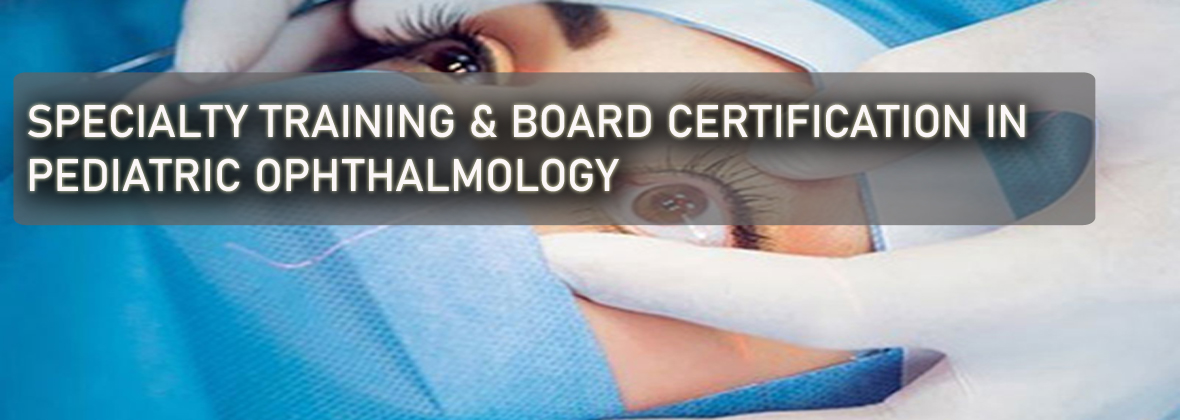
![]()
Paediatric ophthalmology is the subspecialty of ophthalmology which concerns about the well being of ocular health of newborns, infants, toddlers and children less than 12 years of age. Prevention, early diagnosis, application of standard treatment and rehabilitation of ocular diseases is critical in this population of any society. In newborns and early infancy, structural abnormalities such as congenital cataract, retinopathy of prematurity, congenital glaucoma, and retinoblastoma (a vision- and life-threatening malignancy), are the most severe vision-threatening eye problems. Other childhood ocular problems include strabismus, amblyopia, and refractive problems. Strabismus is any ocular misalignment. The most common types of strabismus are esotropia (inwardly deviating eyes, or crossed eyes) and exotropia (outwardly deviating eyes, or wall-eyes). Amblyopia refers to an abnormality of visual development characterized by decreased best-corrected visual acuity not fully attributable to a structural abnormality of the eye. Amblyopia may be unilateral or bilateral and is best treated in early childhood. However, recent data show that amblyopia may be treated even in the teenage years. The prevalence of amblyopia varies by race/ethnicity. Approximately half of amblyopia is secondary to strabismus (mainly esotropia) and the other half is from other causes such as high refractive errors, anisometropia (asymmetric refractive errors), or structural ocular problems. Amblyopia is unusual in children with intermittent exotropia. The prevalence of amblyopia in children with developmental delay is six fold greater than in children who were healthy, full-term infants. Visually important refractive errors include high hyperopia, moderate astigmatism, moderate to high myopia, and asymmetric refractive errors. An estimated 5% to 7% of preschool children have visually important refractive errors. Twenty-five percent of children between the ages of 6 and 18 years would benefit from corrective lenses for refractive error or other reasons. During the school years, visual difficulties such as those caused by uncorrected refractive errors may interfere with school performance. Premature birth is a major risk factor for severe visual impairment and blindness in childhood. The most common ocular problem in preterm infants is retinopathy of prematurity (ROP). The frequency and severity of ROP is inversely related to gestational age. Preterm infants also have higher rates of amblyopia, strabismus, refractive error, optic atrophy, and cortical visual impairment. Years later, these children may develop glaucoma and retinal detachments. The visual impairment is often accompanied by cerebral palsy, epilepsy, and other motor and mental handicaps. Child with good vision is a blessing to a society. Vision is critical in intellectual development of a child. Therefore, managing good ocular health in children is critical in a nation which is looking forward for an accelerated development in the future. There are no statistics on childhood blindness or eye diseases in paediatric age group in Sri Lanka. Abovementioned conditions cause significant morbidity during childhood and the effects will persist throughout the life of the person. This causes severe burden to the family as well as the economy of the country. This brings the requirement of comprehensively trained and fully dedicated Ophthalmologists to look after the ocular health in children.
![]()
To develop a training module that ensures the Board Certification as Paediatric Ophthalmologist who have the necessary commitment and expertise in achieving superior clinical outcomes in a responsive and patient focused manner in any part of Sri Lanka
![]()
The candidate who enters the above subspecialty training program should have qualified the M.D. (Ophthalmology)
Please refer to the relevant prospectus for the most up to date information. The prospectus of a particular programme contains official information pertaining to a programme approved by the Board of Management, University Senate and the University Grants Commission